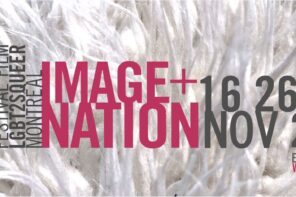Let’s take time to give credit where credit is due, Yorgos Lanthimos has more guts than any other filmmaker at the moment. Not just the guts to tell some of the darkest jokes that cinema has ever seen, or the guts to commit to absurdism and never waiver, but after making a film like The Lobster, which softened his edges, added a heart to his madness, and brought him mainstream acclaim from critics and audiences (provided they could jibe with its particular weirdness), he’s got the guts to double down on both the absurdity and the darkness in The Killing of the Sacred Deer. This new film begins in a similar form to the deadpan humour of The Lobster but winds up more like his previous film Dogtooth, which was too weird and a touch too Greek to cross over.
Colin Farrell stars as the cardiologist; one who must look into his own heart. He seems to be playing a kindly loner, similar to his role in The Lobster, and that expectation acts as a terrific rug-pull, as the film peels off his layers to reveal the complicated truth surrounding his nature. Nicole Kidman is his wife, the optometrist, who must help him see things her way. A newcomer to Lanthimos’ universe, it’s thrilling to watch her charge into this bizarre script head-on. Sunny Suljic and Raffey Cassidy are their frighteningly ordinary kids, giving performances just as strong as the adults, who find themselves at the centre of the film’s moral machinery. Alicia Silverstone, Martin’s mother, only gets one scene to work with, and boy does she work with it. But it’s Barry Keoghan (Dunkirk) who gives the film’s best performance, playing Martin, a horrifying and banal character who drives the plot of the film.
The jokes that he’s telling get darker and darker, to the point that even though he’s triple dog daring you to, you couldn’t possibly laugh
The nature of that plot I won’t dare reveal, like all Lanthimos films, it’s best to go into Sacred Deer knowing as little as possible. Like Dogtooth, Deer primarily concerns itself with the relationship between parents and children, and poses a moral and ethical question where every possible answer is incredibly bleak. Despite the darkness, there is a great thrill in watching this story develop, getting more twisted with every turn. Simply speaking, Martin and the Optometrist develop a strange sort of relationship, first charming and fatherly (I assumed Martin was Farrell’s estranged son at first), but soon uncomfortable and soon after that, violent.
And yet, for the first hour or so, the audience I was in couldn’t stop laughing. Though Lanthimos has never been more horrifying, he’s also never been funnier. Every character says precisely what’s on their mind at any given moment, which gives the film a dry sort of wit that, if it’s your sense of humour, works like a charm. I found myself wondering whether the film would even be able to pull off horror, given the first half. But soon, precisely as the first half ends, all laughter ended abruptly. But that’s not because Lanthimos stops telling jokes, rather the jokes that he’s telling get darker and darker, to the point that even though he’s triple dog daring you to, you couldn’t possibly laugh.
If you require a narrative that makes sense, look elsewhere
If you require a narrative that makes sense, look elsewhere. Though to say Sacred Deer doesn’t make sense would be a bit reductive; it doesn’t make our kind of sense, rather it’s content to make its own kind of sense, beginning from a point of darkness and absurdity and sketching the following events as realistically as they could possibly go. Every scene reveals a new truth, each one more painful, until we’re down to the purest truth of all, revealed in the final scene, which is darker than anything I’ve seen in a theatre in a long time. In the manner that he presents his characters with an unbearable ultimatum and regards their behaviour, and especially the distance his narrative creates, Lanthimos is one step away from going full Michael Haneke.
Visually, however, he’s gone full Stanley Kubrick. Lanthimos takes every opportunity to frame his characters in the centre of the shot, often in a hallway, with a long lens that stretches the path out in front of the subject. Elsewhere, he frames his characters small, dominated by their ordinary environments with a camera that slowly creeps along, making household spaces seem threatening. When he goes in for a close-up, it’s uncomfortably close, with as long a lens as possible, to bring everything right in the viewer’s face and blur the background. Admittedly the visual wit he brought to The Lobster is missed here, but Sacred Deer is truly elevated by the way the form mimics the theme: first Lanthimos shows the whole scene, sets up everyone’s relationship to everyone else and to the background, and then moves in closer, probes deep into the minds of the characters, searching for secrets.
The Killing of a Sacred Deer isn’t perfect. Kidman’s character is underdeveloped and saddled with problematic material in the film’s second half. Barry Keoghan’s character could use more motivation, or at least more focus. The Kubrickian posturing of the visuals and the Haneke-like machinations of narrative, as well as a fortitude for the tableau staging of Roy Andersson, shed more light on Lanthimos’ style that’s not quite as original as it seems at first. To a seasoned viewer of his films, once the game is revealed there’s only one way it can go, and it’s not altogether surprising. But if you’ve never seen one before, take a chance on The Killing of a Sacred Deer. After all, if a guy like this is working, Hollywood is clearly not out of ideas.







